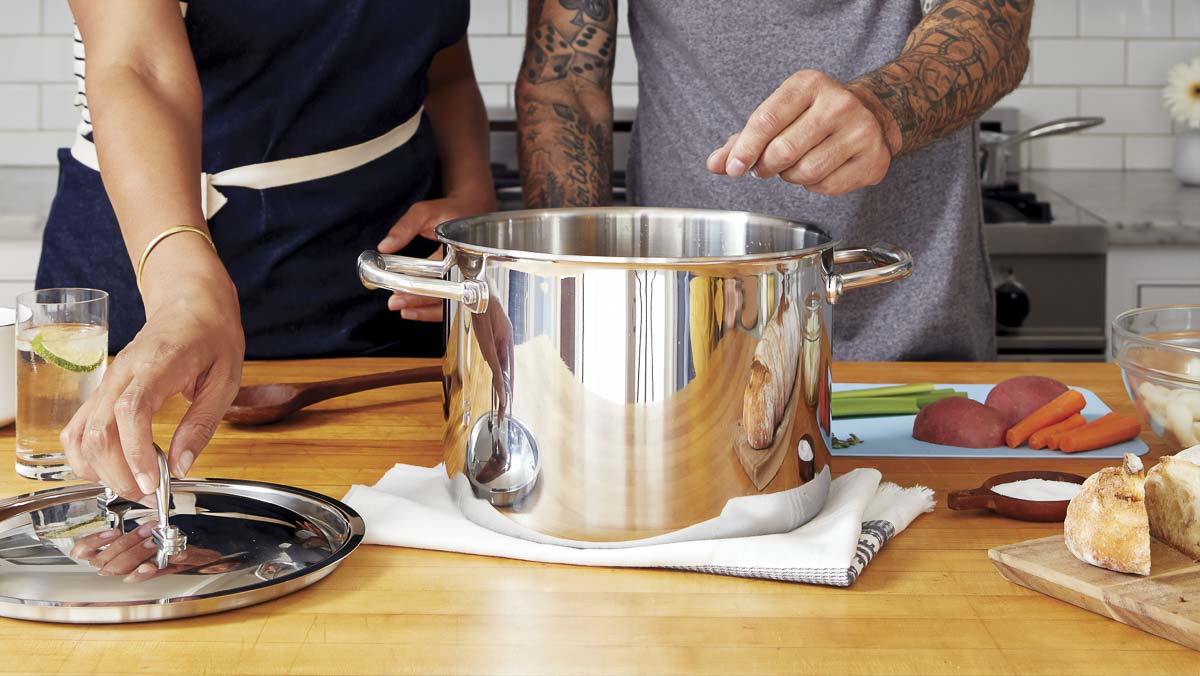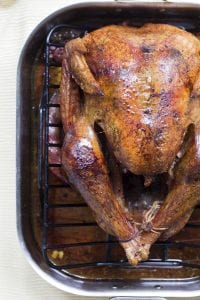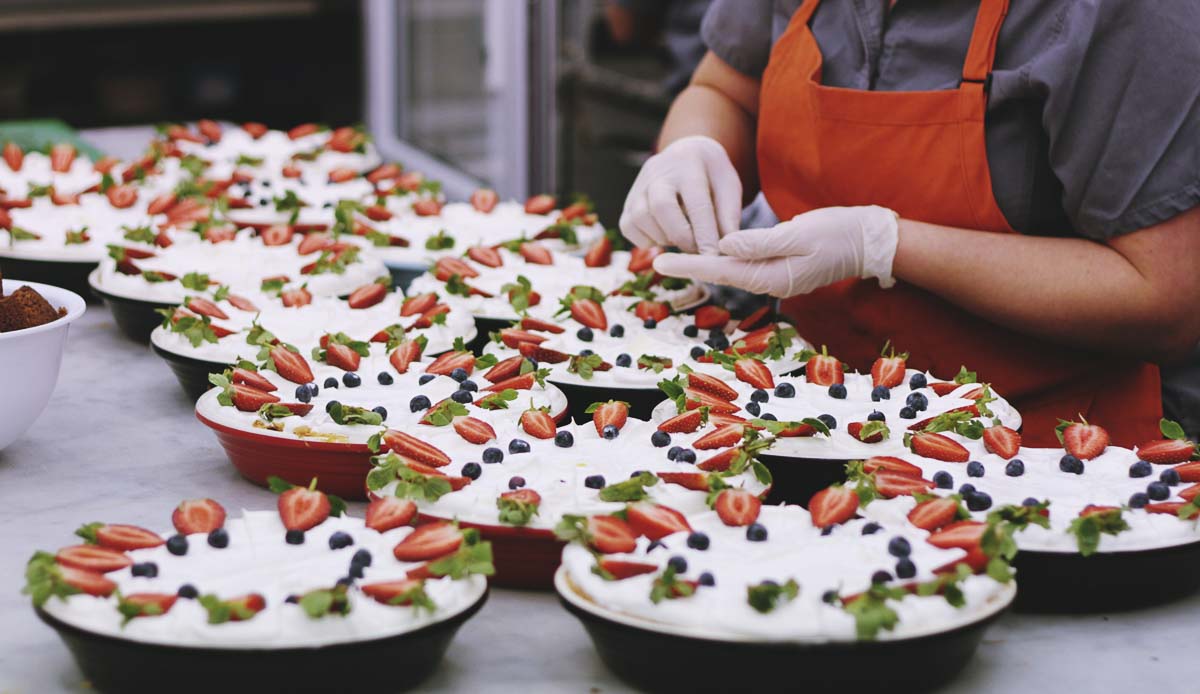PeaceHealth Southwest food and nutrition services director provides tips on making sure your Thanksgiving dinner doesn’t get anyone sick
The connection between food and Thanksgiving go all the way back to the beginning of the American holiday, though the pilgrims almost surely didn’t enjoy deep-fried turkey and jellied cranberry sauce.

There’s plenty of pressure to put on a Thanksgiving meal that’s not only delicious, but served up on time. Equally important though says Angela Hahn, PeaceHealth Southwest Medical Center’s director of food and nutrition services, is protecting your diners from dangerous bacteria like salmonella.
“Food borne illnesses can strike in multiple stages of the meal process, so be mindful when preparing, cooking, serving, and storing your food,” says Hahn.
These tips can help keep you and your family safe not just during the holidays, but all year ‘round.
PREPARATION
Keep raw meat, poultry, eggs, fish, and shellfish away from other foods, surfaces, utensils, and serving plates, says Hahn. Do not wash or rinse raw meat and poultry. Washing or rinsing meat and poultry makes it more likely that bacteria will spread from the meat or poultry to kitchen utensils, countertops, and ready-to-eat foods.
If possible, use two cutting boards, says Hahn.
“One for fresh produce and the other for raw meat, poultry, and seafood,” she says. “Otherwise, be sure to wash the cutting board with hot, soapy water between each use.”
You can also wash your knives and cutting boards in the dishwasher to disinfect them. Replace cutting boards when they have become worn or have developed hard-to-clean grooves which can harbor bacteria and viruses.
Keep kitchen surfaces clean with hot, soapy water. Wash dishcloths and towels often in the hot cycle of your washing machine.
Wash raw fruits and vegetables under running water before eating them. Marinate foods in a covered dish in the refrigerator, not on the counter. Never thaw frozen meat, poultry, fish, and shellfish at room temperature. Thaw in the refrigerator or microwave. If you thaw food in the refrigerator, be sure juices do not drip onto other food. Place these foods on the lowest shelf, never above ready-to-eat foods.
Cook food immediately after thawing.
COOKING

It is important to cook foods at a safe temperature to avoid food poisoning, says Hahn.
“Use a clean meat thermometer to determine whether meat, poultry, or egg dishes are cooked to a safe temperature,” she says. “Bring sauces, gravies, and soups to a boil when reheating. Reheat other leftovers to at least 165 degrees fahrenheit (74 degrees celsius).”
When using a microwave oven, cover the food container and turn or stir the food to make sure it is heated evenly throughout. If the microwave does not have a turntable, rotate the dish by hand once or twice during cooking.
Cook eggs until whites and yolks are firm. Do not eat raw or partially cooked eggs (including cookie dough), raw (unpasteurized) milk, cheeses made with raw milk, or unpasteurized juices.
Do not eat undercooked hamburger, the main source of E. coli infection.
Be aware of the risk of food poisoning from raw fish (including sushi), clams, and oysters. Cook fish and shellfish until it is opaque and flakes easily with a fork.
Freezing food keeps it safe for as long as it is frozen.
SERVING
If you’re able, keep hot foods at 140 degrees and cold food below 40 degrees fahrenheit, says Hahn.
“Never leave meat, poultry, eggs, fish, or shellfish (raw or cooked) at room temperature for more than 2 hours,” she adds. “If the temperature outdoors is above 90 degrees, refrigerate within 1 hour. (Good advice for those Summer picnics).”

Chill leftovers as soon as you finish eating. Store leftovers in small, shallow containers to cool rapidly. Reheating foods that may be contaminated doesn’t make them safe, so if you’re not sure how long something has been in the refrigerator, throw it out.
The rule of thumb, Hahn says, is “when in doubt, throw it out.”
STORING
For storing those Thanksgiving Day leftovers, be sure your refrigerator at or below 40 degrees, and your freezer at or below zero.
“Refrigerate or freeze meat, poultry, eggs, fish, shellfish, ready-to-eat foods, and leftovers within 2 hours or sooner,” says Hahn.
Make sure to cook or freeze fresh poultry, fish, or ground meats within two days of placing them in the refrigerator. For fresh beef, veal, lamb, or pork, the rule is no more than 3 to 5 days in the fridge before they need to be cooked or frozen.
Divide large amounts of leftovers into shallow containers for quicker cooling. Use refrigerated leftovers within 3 to 4 days.
“Don’t pack your refrigerator with food,” says Hahn. “Cool air must circulate to keep food safe.”
In general, high-acid canned food such as tomatoes, grapefruit, and pineapple can be stored, unopened, in a cupboard for 12 to 18 months.
Low-acid canned foods, such as meat, poultry, fish, and most vegetables can be stored for 2 to 5 years. But the can must be in good condition and stored in a cool, clean, dry place.
If the food label has a “use by” date, try to eat the food by that date. If that date has passed, it doesn’t mean the food is no longer safe, but check it carefully before eating it for any signs that it has spoiled. If the food smells, feels, or looks strange, throw it away.
You can find more food safety tips on the US Department of Agriculture’s website here.




